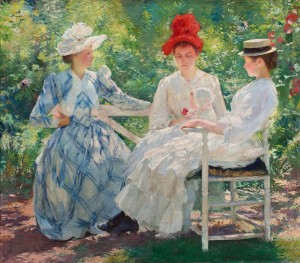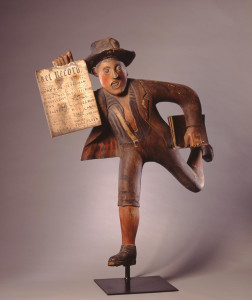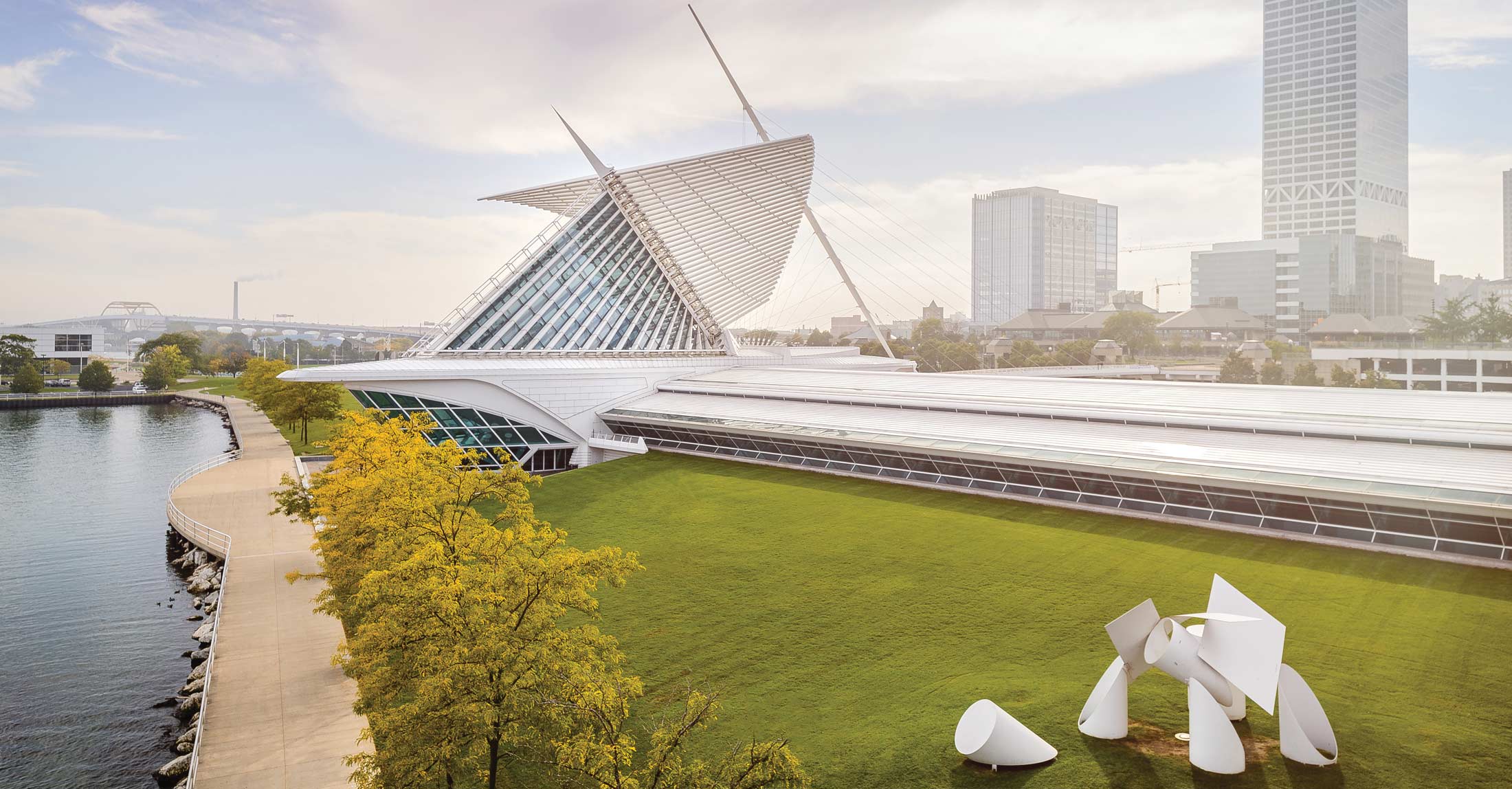
What’s New and Noteworthy in the Reimagined Milwaukee Art Museum
The Milwaukee Art Museum’s November 24 grand reopening will include completely renovated, reinstalled, and reimagined galleries for its world-class Collection. Read on to discover what’s new and noteworthy in each area.
The two brand-new spaces are the Herzfeld Center for Photography and Media Arts and 20th- and 21st-Century Design Galleries. Expanded galleries are the Antiquities and European Galleries, the Constance and Dudley Godfrey American Art Wing, the Folk and Self-Taught Art and Haitian Art Galleries, and the Modern and Contemporary Art Galleries. Kids can also explore the new Kohl’s Art Generation Gallery.
Read the press release | Browse available images | Reference the fact sheet
Herzfeld Center for Photography and Media Arts
The new Herzfeld Center for Photography and Media Arts is a 10,000-square-foot space devoted to a global array of photography, film, video installation, and media art. Unparalleled in scope, it heralds the growing importance of photography and media art both as art forms and as anchors of the collections. As the Museum’s first space dedicated to the light-based media, the Herzfeld Center makes Milwaukee a destination for photography and film
audiences nationwide. The inaugural exhibition, Light Borne in Darkness, presents highlights from the Museum’s photography Collection, shown together for the first time. Visitors can discover the history of the medium through its most important masters, including Edward Steichen, whose Pool, Milwaukee (ca. 1899), launched his development as a photographer; Alfred Stieglitz, considered the father of American photography; Wisconsin natives Lewis Hine and Ray Metzker; American masters Diane Arbus, Lee Friedlander, Garry Winogrand, Lorna Simpson, and Stephen Shore; iconic works by Walker Evans, Louis Faurer, Robert Frank, Paul Graham, and William Klein; and landmark film stills by Cindy Sherman.
Returning favorite: Stanley Landsman’s Walk-In Infinity Chamber uses the magic of two-way mirrors and 6,000 light bulbs to transport visitors to space. It is one of the most popular destinations and photo opportunities in the Museum, a favorite of everyone from art scholars to young kids.
New on view from the collections: Edward Weston’s 1938 Bad Water, Death Valley was the Museum’s first photography purchase made in 1957, decades before many other museums started to focus on photography. The striking image is typical of Weston, considered to be one of the masters of twentieth-century photography.
New to the Museum: A contemporary work from renowned British artist Anthony McCall, You and I, Horizontal (II) (2006) is sure to be a new favorite. In this interactive room, choreographed light is projected through dark and mist. When visitors move through the space, they create their own sculpture of light and shadow.
Curator: Lisa Sutcliffe, curator of photography and media arts
Square feet: 10,000
Number of works on view: 180
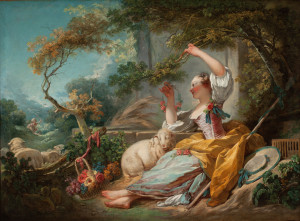 Antiquities and European Galleries
Antiquities and European Galleries
Spanning two floors of the newly restored Saarinen building and nearly doubling the previous gallery display space, the European galleries transform works of exquisite beauty into a gateway to European history, religion, and culture, and turn the Milwaukee Art Museum into a literal walk through time. Exciting new acquisitions will share space with reinstalled favorites and a continually changing presentation from the Museum’s Collection. The objects will range from
masterpieces such as Nardo di Cione’s Madonna and Child, Jean-Honoré Fragonard’s The Shepherdess, and William-Adolphe Bouguereau’s Homer and His Guide, to the finest grouping of Renaissance master clocks in the country, powerful Baroque sacred art, and some of the most magnificent nineteenth-century German art outside of Germany. Brand-new special exhibition areas will also feature displays of important prints and a salon-style display of American and European masterpieces of the founding Layton Art Collection. In addition, a special exhibition, Dürer and the German Renaissance, will present an exquisite selection of key prints by renowned sixteenth-century German artist Albrecht Dürer.
Returning favorite: Spanish artist Francisco de Zurbarán’s arresting, life-size Saint Francis of Assisi in His Tomb (ca. 1630/34) appears to be stepping out of the frame and into the new sacred Baroque gallery. This masterpiece was the Museum’s first major purchase of European painting.
New on view from the collections: Adriaen van der Werff (1659–1722) was one of the most important artists of his time, a favorite of the royal courts and the highest-paid painter in Europe. While he was later overshadowed by contemporaries such as Rembrandt, his mastery is clear in Doubting Thomas (1710), perhaps the finest van der Werff work in the U.S.
New to the Museum: An exquisite example of Dutch painting, A Young Woman at a Window with a Parrot and a Birdcage by Pieter van Slingeland (1640–1691) is actually a visual joke—the birdcage, parrot, and girl hint at a loss of virtue. The Dutch enjoyed “reading” paintings for entertainment, and many copies of this particularly popular scene were made during the period. It is thought that this variation is the best among the known examples.
Curator: Tanya Paul, Isabel and Alfred Bader Curator of European Art
Square feet: 14,500
Number of works on view: 300
Constance and Dudley Godfrey American Art Wing
For the first time in Museum history, visitors can experience the full story of American fine art and decorative arts, in the newly inaugurated Constance and Dudley Godfrey American Art Wing. This 16,000-square-foot display space, named in honor of two of Milwaukee’s most dedicated American art collectors and Museum patrons, includes galleries devoted to the Museum’s remarkable eighteenth-century decorative arts and paintings collection, Hudson River landscapes, works by the Ashcan School and the Eight, and an integrated display of Arts and Crafts movement and Prairie School design. They’ll be joined by new acquisitions, including Charles De Wolf Brownell’s majestic Bay of Matanzas, Cuba (1860), completed just before the revolution, seldom-seen objects by Thomas Hart Benton, Aaron Douglas, and others, and early twentieth-century works that lead into the adjacent Modern art galleries.
The decorative arts tell compelling and often surprising stories about the relationships that exist between past and present and among beauty, function, and possibility. Visitors will be able to explore these stories in the Chipstone Galleries, five distinct spaces amid the American galleries that are curated by the Chipstone Foundation, a Milwaukee-based organization celebrating the decorative arts.
Traditional objects take on provocative new life before your eyes in the installation NEO, for which contemporary artists have redefined historic furniture forms into modern sculptures. The Dave Project, named for enslaved potter David Drake—who boldly wrote his name and poems on his massive, beautiful jars—honors the work and lives of early African American decorative artists. The Art of Carving explores the mystery and history of America’s golden age of carving. The Chipstone Cosmos presents a changing array of precious artifacts, including the oldest porcelain made in America and a giant Russian reindeer hide found at the bottom of the English Channel—and the fascinating stories they tell. Mrs. M’s Cabinet, which will debut early in 2016, is an immersive installation that will transport visitors across time into the home of a brilliant collector who has her own distinct vision of early America.
Returning favorite: Henry Vianden’s Landscape with Mountains and River was crowned the Museum’s number one “visitor favorite” in a recent survey. Vianden was a Milwaukee artist who influenced an entire generation of Wisconsin painters. The majestic, mountainous landscape, unlike any seen in Wisconsin, is most likely pure fantasy—possibly explaining why it is so enticing.
New on view: Within Chipstone Galleries’ NEO space, Wisconsin glass artist Beth Lipman will be creating a new work using a stripped, antique desk as a base. The desk, once an important object in Chipstone’s collection, was recently discovered to be fake. Lipman will create an explosion of glass around the original piece, transforming it back into a priceless work of art.
New to the Museum: Jeremiah Paul’s Manumission of Dinah Nevill, Philadelphia, ca. 1795, is an arresting and haunting abolitionist painting, and remarkable for being the first of its kind. Dinah Nevill, a freedwoman, was captured and sold into slavery before being rescued. The tragic tale became a lightning rod for early abolitionists such as Jeremiah Paul, who painted her pleading for her freedom.
Curator: Brandon Ruud, Constance and Dudley J. Godfrey, Jr., Curator of American Art and Decorative Arts
Square feet: 15,000
Number of works on view: 500
Folk and Self-Taught Art and Haitian Art Galleries
Just as folk and self-taught art breaks boundaries and defies the expectations of conventional art, the dynamic new Mezzanine level galleries for the Richard and Erna Flagg Collection of Haitian Art and the Folk and Self-Taught Art Collection will change the way you look at art. Art and environment will be integrated in ways that will delight the senses and stimulate the imagination. Steel drum sculptures float along a wall, accompanied by the sounds of the Haitian workshop where they were made; a rarely seen collection of hand-carved fish decoys swim in a glass “fish tank”; and Edgar Tolson’s remarkable and provocative eight-part sculpture The Fall of Man brings early Bible stories to life in a wall case built and lit specifically for the complete work. And for the first time, a special rotating gallery will display highlights of European folk art from the Anthony Petullo Collection.
These are two of the finest collections of their kind in the world. The 8,000-square-foot space on the mezzanine of the Kahler building gives ample room for both iconic favorites and startling new additions, and allows visitors to discover the universal language of art created in very different places. And for families seeking to fully immerse themselves in the art and culture of Haiti, past and present, the Kohl’s Art Generation Lab in the Haitian gallery is the first of its kind to merge a world-class collection with experiential learning through performance, video, and hands-on activities.
Returning favorite: The sprinting, hollering Newsboy (1888) is an excellent example of the wooden shop signs used to quickly identify businesses (in this case the Pawtucket Record) in the nineteenth century. The Newsboy is unique for sense of motion he conveys, and in his new setting, visitors will now be able to see his exceptional details from multiple angles.
New on view from the collections: The Museum’s unique collection of Haitian steel oil-drum sculptures, many of which will be on view for the first time, will take over an entire wall, along with the sounds of Croix-des-Bouquets (croi-deh-bookeh), the town where such sculptures are made and where the ping of hammers spills out of every doorway.
New to the Museum: The Haitian galleries are organized around a structure called a lakou (lah-koo)—a word meaning “gathering” or “meeting place”—that exists at the center of many Haitian communities. The Museum’s lakou is a interior gazebo with spaces for video, performances, contemporary artists, and hands-on activities that is a unique gathering place for new ways of learning.
Curator: Margaret Andera, adjunct curator of contemporary art
Square feet: 8,000
Number of works on view: 180
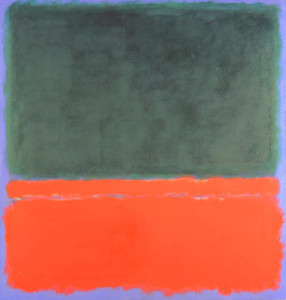 Modern and Contemporary Art Galleries
Modern and Contemporary Art Galleries
Modern and Contemporary art is all about breaking boundaries, and visitors now can experience the Milwaukee Art Museum’s world-renowned collections in a space that gives free rein to unbounded imaginations. The modern art collection, donated by Peg Bradley in the late 1960s, flows from American Modernism of Georgia O’Keeffe, Stuart Davis and Milton Avery, Pablo Picasso and Alberto Giacometti, culminating with Abstract Expressionists Mark Rothko and Helen Frankenthaler. Monumental paintings from Richard Diebenkorn’s most celebrated series, Ocean Park, now have breathing room as befitting their scale. Important German Expressionist works by Gabriele Münter, Wassily Kandisnky and Ernst Ludwig Kirchner are also featured prominently. In the east addition, sculpture galleries with soaring 16-foot windows create a stunning, meditative space overlooking Lake Michigan and—for the first time in Museum history—the Calatrava-designed Quadracci Pavilion. And the new Bradley Family Gallery, a 4,000-square-foot special exhibition space, allows the Museum to present twice the number of feature exhibitions, beginning with Sam Francis: Master Printmaker, sponsored by Sendik’s Food Market, on November 24.
The Museum’s collection of contemporary and postwar art now spans four vast halls, with pivotal works by Roy Lichtenstein, Andy Warhol, Robert Irwin, and Donald Judd, among others. Ceilings are over 17 feet high, a perfect scale for these imposing works and a new jaw-dropping indoor sculpture garden.
Returning favorites: Pop artist Tom Wesselman’s Still Life #51 (1964) takes center stage, greeting visitors who enter the Kahler building through the Quadracci Pavilion. Featuring an 8-foot-tall can of Pabst Blue Ribbon beer, the work is a local favorite and acts as a welcome into the world of contemporary art.
New on view from the collections: Possibly the heaviest artwork in the Museum, Claire Zeisler’s massive fabric sculpture High Rise (1983-84) weighs almost 2 tons, and will be hung from the ceiling, cascading onto the floor. The work returns to view after almost a decade as a centerpiece of the dramatic high-ceilinged indoor sculpture gallery, designed specifically to allow visitors to experience monumental creations of contemporary art.
New to the Museum: A new work in plaster by contemporary British artist Thomas Houseago will join the vast contemporary sculpture gallery. Housago, who works primarily in Los Angeles, is known for what the The New York Times describes as his “towering, hulking figures and masks that draw on ancient art as well as the tradition of Picasso, Rodin and Brancusi” as well as his “fearlessness.”
Curator: Brady Roberts, Chief Curator
Square feet: 41,500
Number of works on view: 280
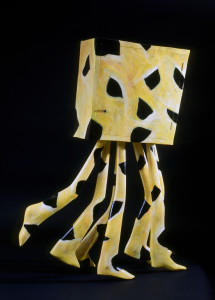 20th- and 21st-Century Design Galleries
20th- and 21st-Century Design Galleries
Prominently positioned near the new lakeside entrance, the 20th- and 21st-century design galleries are the first spaces in the Museum’s history devoted exclusively to design and decorative arts, including housewares, jewelry, furniture, craft, graphic and book design, textiles, and wallpaper. Visitors will have a unique opportunity to explore the interplay between art and technology, beauty and functionality, and industry and inspiration. The galleries are structured into a series of thought-provoking and focused vignettes, including a peek into industrial design through the extensive archives of legendary industrial designer and Milwaukeean Brooks Stevens; objects by pioneering women industrial designers Virginia Hamill, Ilonka Karasz and Elsa Tennhardt; and the “chair wall,” a dramatic display of furniture from the 1920s through the 3-D printed chairs of today. Along the concrete surface of the building, textiles by contemporary designers Hella Jongerius and Timorous Beasties join reproductions of prints by Alexander Girard and Charles and Ray Eames. In a separate display, the Museum’s beloved but rarely seen collections of studio glass will be installed along the light-filled Baumgartner Galleria of the Santiago Calatrava–designed Quadracci Pavilion, adjacent to the Museum’s large-scale Dale Chihuly glass sculpture.
Returning favorites: Wendell Castle’s Walking Cabinet (1984)—a brightly colored cabinet with six legs—intentionally blurs the lines between sculpture and furniture. Credited with reviving the handcrafted furniture movement in the U.S., Castle was recently awarded a Lifetime Achievement Award by the Brooklyn Museum, and a retrospective of his work is planned for late 2015 at the Museum of Art and Design, New York.
New on view from the collection: Wisconsin-based artist Harvey Littleton’s Lemon/Red Crown (1984) will be a highlight of the new studio glass installation. Considered the father of modern glassblowing, Littleton’s University of Wisconsin glass program trained an entire generation of prominent glass artists, including Dale Chihuly.
New to the Museum: The Museum’s first 3-D printed object is a chair by Dutch designer Joris Laarman, best known for his works in emerging technologies and his international reach. He is currently 3-D printing an entire steel bridge in Amsterdam. The chair is part of his Microstructures series, an experiment in using 3-D printing for consumer goods.
Curator: Monica Obniski, Demmer Curator of 20th- and 21st-Century Design
Square feet: 5,000
Number of works on view: 225
Kohl’s Art Generation Gallery: Rubbish!
Kohl’s Art Generation is a joint effort between Kohl’s Cares and the Milwaukee Art Museum to bring art and creativity to area kids and their families. The new Rubbish! interactive gallery unites art and fun to explore the ways artists have used discarded materials to create beautiful works of art. Kids will engage with Deborah Butterfield’s horse made out of sticks and mud; Clarence and Grace Woolsey’s bottle-cap wonders; Martín Ramírez’s collaged drawings stuck together with mashed potatoes; and Chakaia Booker’s sculptures made from used car and truck tires—along with art-making videos and hands-on activities.
###

